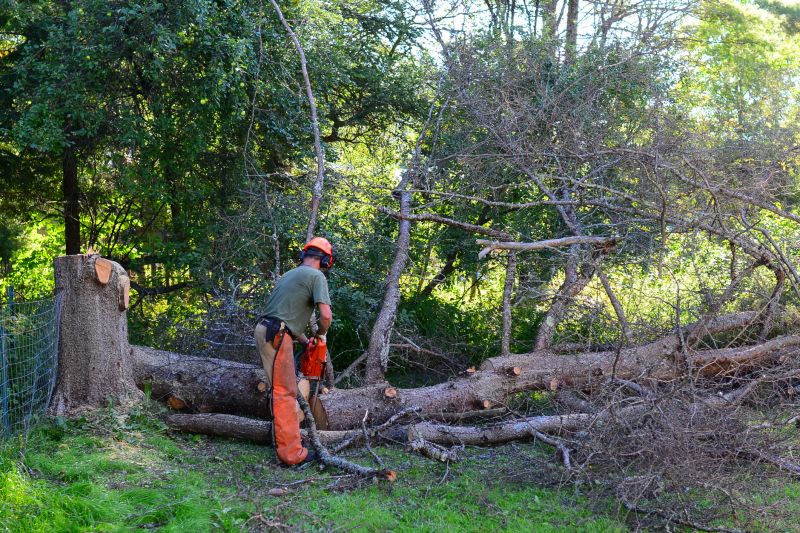Popular Tree Removal Equipment For Safe and Effective Clearing
Discover the most trusted tools and gear that help you handle tree removal projects with confidence and precision.
 Tree removal is a task that often requires specialized equipment to ensure safety and efficiency. Whether dealing with hazardous limbs, dead trees, or clearing space for new planting, selecting the right tools is essential. Heavy-duty equipment such as chainsaws, pole saws, and stump grinders are common choices for various removal needs. Proper safety gear and accessories further enhance the process, helping users work confidently and securely. It is important to understand the scope of the job and choose equipment that matches the size and type of trees involved.
Tree removal is a task that often requires specialized equipment to ensure safety and efficiency. Whether dealing with hazardous limbs, dead trees, or clearing space for new planting, selecting the right tools is essential. Heavy-duty equipment such as chainsaws, pole saws, and stump grinders are common choices for various removal needs. Proper safety gear and accessories further enhance the process, helping users work confidently and securely. It is important to understand the scope of the job and choose equipment that matches the size and type of trees involved.
Top Overall Option
Heavy-Duty Gas-Powered Chainsaw
A versatile and powerful gas-powered chainsaw is often considered an essential for serious tree removal tasks. It offers the mobility and cutting capacity needed for larger limbs and trunks, making it suitable for both professional and dedicated DIY use. Features to look for include a robust engine, ergonomic design, and safety features such as chain brakes and anti-vibration handles. Proper maintenance and safety precautions are important to maximize performance and safety during use.
Types of Products For Tree Removals
Chainsaws
Powerful handheld tools designed for cutting through thick wood and limbs, suitable for various sizes of trees.
Pole Saws
Extendable saws that allow users to reach high branches without a ladder, ideal for trimming and light removal.
Stump Grinders
Specialized equipment for grinding down tree stumps after removal, helping to clear the area completely.
Pruning Saws
Handheld saws designed for detailed trimming and smaller branch removal tasks.
Loppers
Long-handled cutting tools suitable for trimming thick branches at a comfortable height.
Aerial Lifts
Elevated work platforms that provide safe access for large tree removal and trimming.
Safety Gear
Protective equipment including helmets, gloves, eye protection, and chainsaw chaps for safe operation.
Ropes and Harnesses
Climbing and securing tools for professional tree removal and trimming at height.
Debris Chippers
Machines that convert branches and limbs into mulch, aiding in cleanup after removal.
Tree Removal Accessories
Additional tools and attachments such as wedges, axes, and pullers to assist in controlled removal.
Popular Choices
Portable and easy to handle, suitable for light to moderate tree trimming and removal tasks.
Hand-powered saws ideal for precise trimming and smaller branches.
Lightweight tools for reaching high branches without climbing.
Compact options for small stump removal in tight spaces.
Equipment for professional arborists to ascend and work safely at height.
Tools designed for pulling out small to medium-sized trees with minimal equipment.
Heavy-duty attachments for excavators used to cut and remove large branches or entire trees.
Complete kits that include various tools needed for small-scale removal projects.
Protective headgear designed for tree work safety.
Secure harnesses for professional tree climbers working at height.
Sets for detailed carving or trimming work on trees or wood sculptures.
Heavy-duty bags for collecting branches and leaves during removal.
Tools used to assist in controlled tree felling and removal.
For larger trees or more complex removals, professional-grade tools are recommended. These often feature increased power, durability, and safety features. Smaller, portable options are suitable for minor trimming or removal tasks around residential properties. Additionally, accessories like protective clothing, gloves, and eye protection are vital for safe operation. When selecting products, consider the ease of use, maintenance requirements, and compatibility with existing tools.
In Peoria, AZ, where the landscape can include both urban and semi-rural environments, having reliable tree removal equipment can make the process smoother. Proper planning and equipment selection not only improve efficiency but also reduce the risk of accidents. It is advisable to assess the size and condition of the trees, as well as the surrounding area, before choosing the appropriate tools. Investing in quality equipment can lead to better results and safer work practices, whether for professional arborists or dedicated homeowners.
Key Buying Considerations
- Assess the size and type of the tree to determine the appropriate equipment capacity.
- Consider whether the task involves trimming, full removal, or stump grinding to select suitable tools.
- Evaluate safety features such as chain brakes, anti-vibration handles, and safety guards.
- Determine if portability or power is more important based on the work environment.
- Check for ease of maintenance and availability of replacement parts.
- Look into the weight and ergonomics of handheld tools for comfortable extended use.
- Review the compatibility of accessories and attachments with existing equipment.
- Estimate the frequency of use to decide between professional-grade or occasional-use tools.
- Consider storage space and ease of transport for larger equipment.
- Ensure the equipment complies with local safety standards and regulations.
- Research user reviews for insights on durability and performance.
- Evaluate the availability of customer support and warranty options.
- Think about environmental conditions, such as dust or moisture, that could affect equipment longevity.
- Budget appropriately for quality and safety features to ensure reliable operation.
- Consult local regulations regarding tree removal permits and safety requirements in Peoria, AZ.
